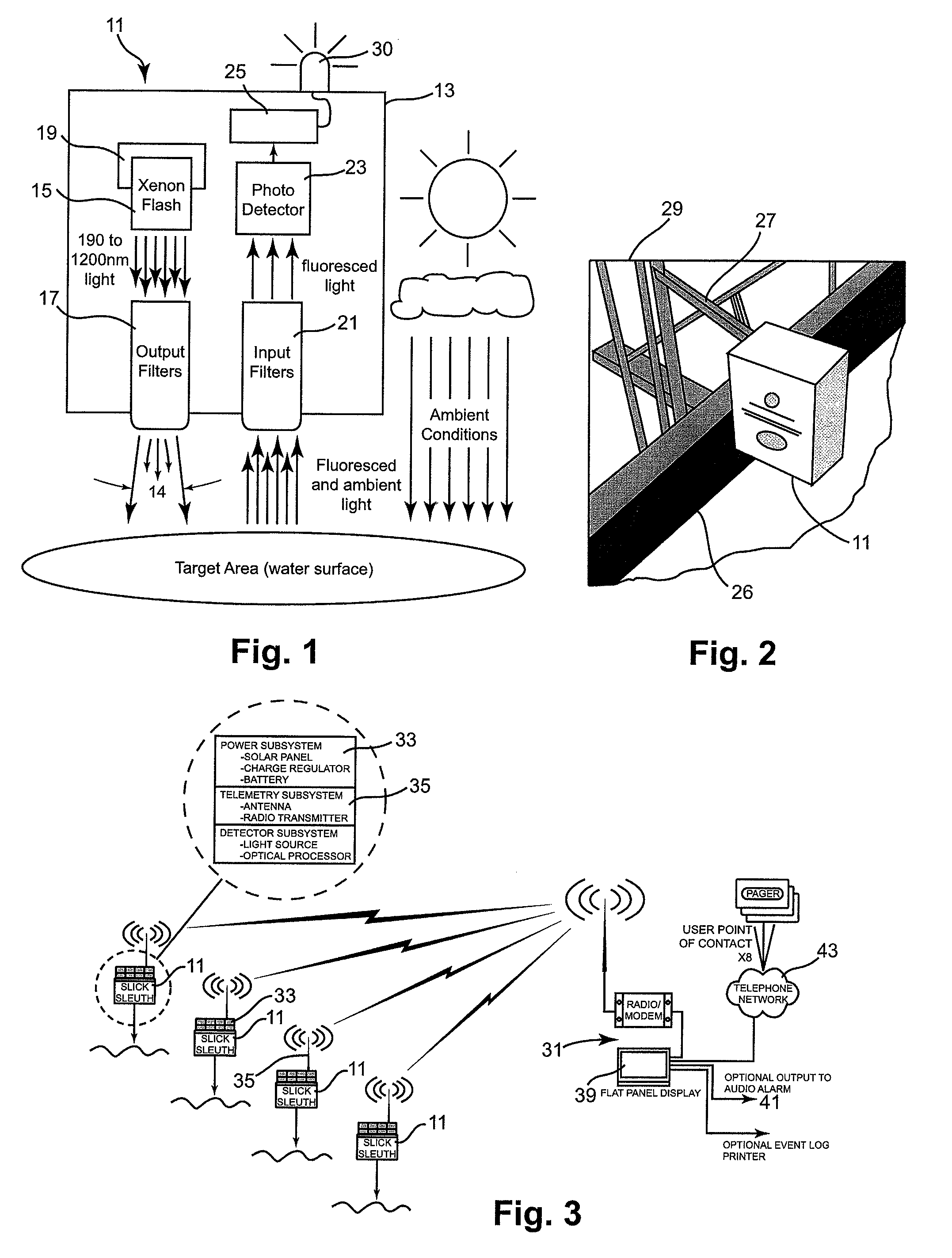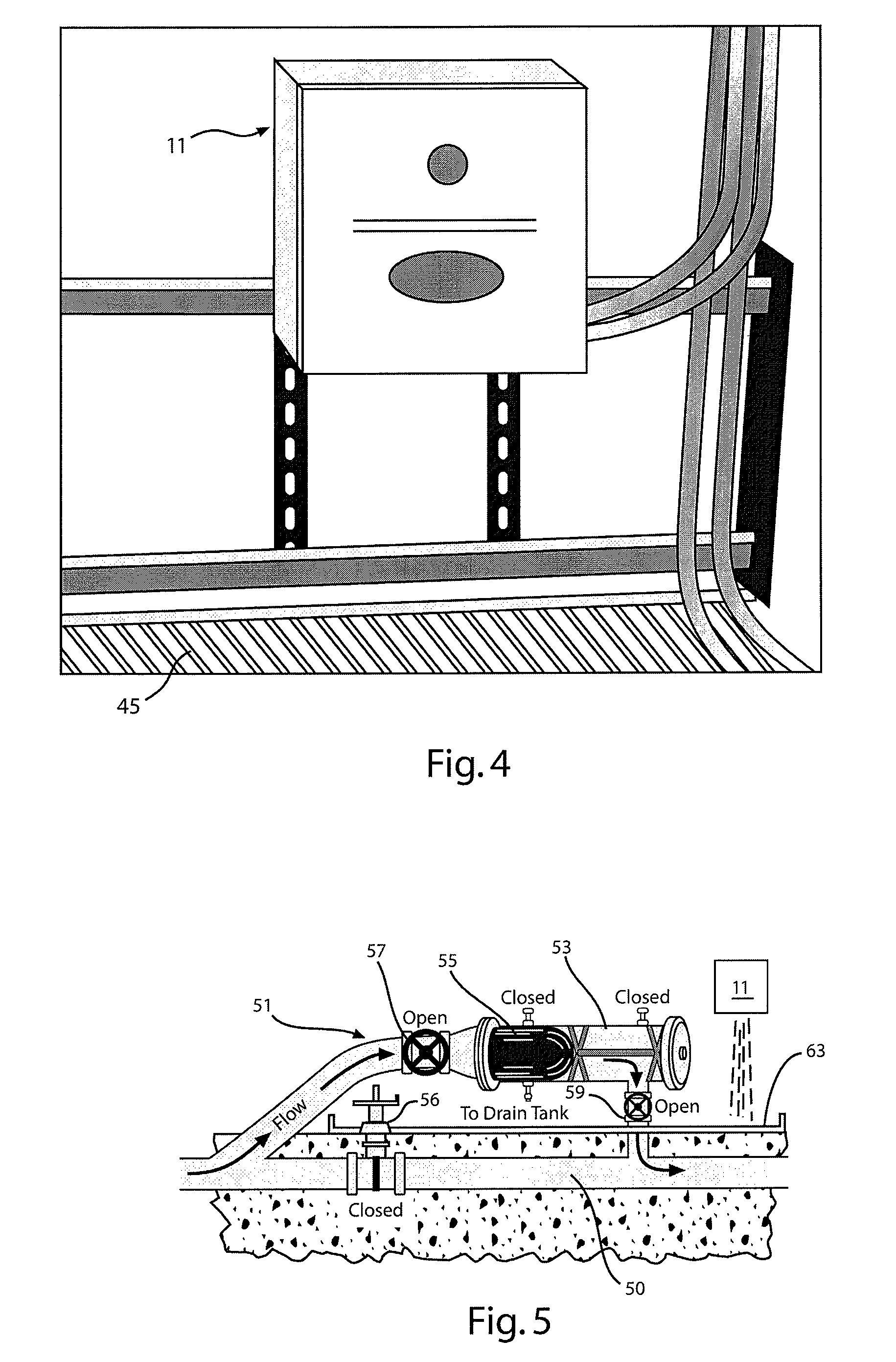Non-contact oil spill detection apparatus and method
a technology of oil spill detection and non-contact, applied in the direction of luminescent dosimeters, optical radiation measurement, fluorescence/phosphorescence, etc., can solve the problems of large oil spills and leakages, large and small, and previous in-water systems developed for monitoring bodies of water have required substantial maintenance, and flow-through systems are susceptible to bio-fouling and oil staining, etc., to achieve effective operation, reliable detection signal, and effective reduction of background interference
- Summary
- Abstract
- Description
- Claims
- Application Information
AI Technical Summary
Benefits of technology
Problems solved by technology
Method used
Image
Examples
Embodiment Construction
[0012]Oils and other organic compounds are known to fluoresce; thus, effective detection apparatus can be used to detect the presence of oil by appropriately exciting a floating oil film and measuring resultant fluorescence. Fluorescence is an optical phenomenon which occurs when a compound absorbs light at one wavelength and then emits light at a longer wavelength. When fluorescent compounds are bombarded with light, some of the light energy is absorbed through the excitation of electrons to higher energy states. Once the light source is removed, the excited electrons fall back to their ground state giving off light in the process. This process is very similar to what makes glow-in-the-dark materials possible, except it takes place in a much shorter period of time. Because some energy is lost as heat in the absorption-emission process, the wavelength of the emitted light is always longer than the wavelength of the absorbed light. Typically the absorbed light for hydrocarbons is in ...
PUM
| Property | Measurement | Unit |
|---|---|---|
| apex angle | aaaaa | aaaaa |
| wavelengths | aaaaa | aaaaa |
| wavelengths | aaaaa | aaaaa |
Abstract
Description
Claims
Application Information
 Login to View More
Login to View More - R&D
- Intellectual Property
- Life Sciences
- Materials
- Tech Scout
- Unparalleled Data Quality
- Higher Quality Content
- 60% Fewer Hallucinations
Browse by: Latest US Patents, China's latest patents, Technical Efficacy Thesaurus, Application Domain, Technology Topic, Popular Technical Reports.
© 2025 PatSnap. All rights reserved.Legal|Privacy policy|Modern Slavery Act Transparency Statement|Sitemap|About US| Contact US: help@patsnap.com



